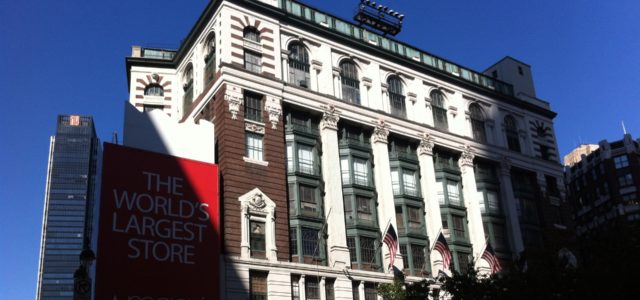There’s an upper limit to the amount of foresight and intuition human beings can bring to any complex process. Beyond that, we need to rely on technology and the gathering of data.
The modern supply chain is a wonder of engineering and human cooperation, but it’s come to rely on an increasingly connected web of digital and physical tools. These days, it’s hard to imagine a supply chain operation that doesn’t pull and react to data in real-time.
Let’s take a look at this modern supply chain in practice, and how all of this data results in leaner operations and timelier decision-making.
Reducing Waste
A significant portion of the human supply chain is dedicated to the transportation of perishable goods. Incredibly, according to research done by Intel, up to 30 percent of our perishable foodstuffs and other products never arrive at their destinations. If there’s a problem in supply chain management worth solving with technology, we found it.
Whether deployed in shipping cartons or throughout a manufacturing or distribution plant, internet-connected sensors are some of our best friends when it comes to the preservation of perishable products. Vaccines and other pharmaceutical products can have strict temperature and humidity requirements.
And some food and beverage ingredients, including the hops used to brew beers, must arrive extremely expediently and, like medicines, under a certain temperature threshold.
Throughout the modern supply chain, connected sensors and GPS-based trackers help us keep tabs on everything in transit and receive data in real-time about the environment en route and the likely condition of the product.
Making Maintenance More Proactive
Supply chain companies big and small rely on the smooth deployment and operation of physical assets. These can be conveyor belts, scanning stations, delivery trucks, pallet handlers, building HVAC and other infrastructure, and much more.
Turning this assembly of mechanical and digital assets into a properly networked “whole” can deliver considerable value for companies that do business in the supply chain space. A compelling example comes from Union Pacific, which oversees the United States’ largest railroad.
Monitoring for, and preemptively addressing, impending mechanical failures in an operation of this size is less a luxury and more an imperative. The company gathers some 20 million temperature readings throughout an average day. Along with other data, these measurements indicate to engineers when a critical piece of equipment is close to failure.
This is a large-scale example, but the concept easily scales up and down. Individual pieces of warehouse equipment can be retrofit with IoT sensors to bring a degree of data-sharing even to older equipment that’s not due for a full replacement yet.
Achieving Transparency and Traceability
Most of the public became aware of blockchain when cryptocurrencies started making the news. Whatever happens with crypto, it’s clear blockchain has a lot more to offer the world — and much of it involves bringing better accountability to the supply chain and to industrial pursuits in general.
Some of the technologies already discussed, such as the deployment of connected sensors in shipments en route to their destinations, can easily pair with blockchain. The result is a set of tools that doesn’t just monitor and report on supply chain activities, but also creates a shared and immutable record describing each step a product takes in its journey in that supply chain.
Consider all of the data points required to ensure top quality in just one industry — seafood:
- Where in the world was the seafood caught, and by whom?
- Did the shipment make any unexpected stops or detours while in transit?
- Did the vehicle or carton dip below or exceed the recommended temperature or humidity at any point?
For years now, restaurants throughout the world have offered a slightly helpful, slightly gimmicky experience for patrons involving scanning QR codes to verify both the origin and — as applicable — humane treatment of one’s meal.
Blockchain grants an additional layer of credibility to this process, even if most of the benefits remain with supply chain and manufacturing companies, who have more on the line — reputational damage, regulatory compliance, etc. — than the average restaurant-goer.
Automating Repetitive Processes for Accuracy
Right now, our requirements for artificial “intelligence” are fairly low. Any time an algorithm can perform a simple task faster or more accurately than a human being, we say the algorithm is “intelligent.” This is a very low bar.
Nevertheless, we see the benefits everywhere of outsourcing everyday repetitive tasks to AI — especially when accuracy and safety are of high importance, which is most of the time in the supply chain. Automation and AI can help improve efficiency, reduce errors and reallocate valuable human capital to processes that require more creativity.
Labor represents some 50 to 70 percent of a warehouse’s budget. But wherever wholesale automation isn’t possible or cost-effective, “AI” can still lend a hand in picking and stowing operations. Warehouse managers, as well as workers on the floor, have to see and touch hundreds or thousands of individual products per day.
AI helps by taking the guesswork out of finding size-appropriate rack locations for incoming freight and by directing employees to the correct bin for piece-picking, the first time, every time.
With each of these advancements and many more, both managers and “foot soldiers” in the sprawling supply chain industry will do more with less, and ensure the rest of us receive our foods, medications and whatever else we need on-time and in the condition we expect.
Article by channel:
Everything you need to know about Digital Transformation
The best articles, news and events direct to your inbox
Read more articles tagged: Automation, Blockchain, Featured







